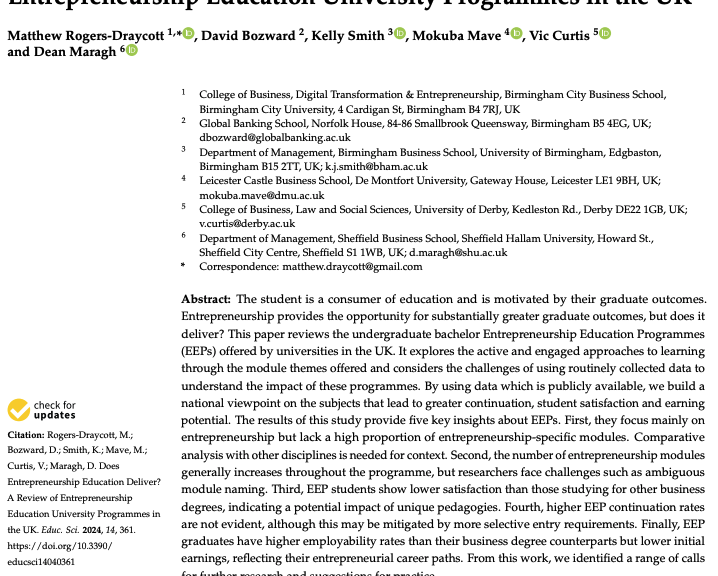The Transformative Power of Entrepreneurship Education
Entrepreneurship isn’t just about starting businesses; it’s a mindset that drives innovation, problem-solving, and adaptability. In today’s fast-paced world, entrepreneurship education is more than a nice-to-have; it’s a must-have. So, what’s the big deal about teaching entrepreneurship?
First off, it’s a game-changer for students. We’re talking about skills that go beyond the classroom – critical thinking, creative problem-solving, and resilience. In an era where the only constant is change, these skills are gold.
But here’s the kicker: entrepreneurship education isn’t just about churning out future CEOs. It’s about nurturing a mindset that can tackle global challenges, innovate in existing fields, and adapt to unforeseen changes. Students learn to see the world not just as it is, but as it could be.
Tips for Lecturers: Sparking the Entrepreneurial Spirit
Alright, educators, it’s showtime! How do you teach something as dynamic as entrepreneurship? Here are some tips to get your students’ entrepreneurial juices flowing:
- Real-World Relevance: Ditch the hypotheticals. Bring in real-world scenarios, case studies, and guest speakers. Let your students sink their teeth into actual business challenges. When learning mirrors real life, engagement skyrockets.
- Foster Creativity: Encourage out-of-the-box thinking. Host brainstorming sessions, encourage diverse ideas, and celebrate innovative solutions. Remember, in entrepreneurship, there’s no such thing as a bad idea!
- Failure is Your Friend: Yep, you heard that right. In the entrepreneurial world, failure isn’t just inevitable; it’s valuable. Teach your students to embrace setbacks as learning opportunities. Resilience is key.
- Hands-On Experience: Theory is great, but practice? That’s where the magic happens. Encourage students to work on real projects, start mini-businesses, or engage in simulations. Learning by doing is incredibly effective.
- Networking and Mentorship: Introduce your students to the power of networking. Encourage them to connect with industry professionals, alumni, and local entrepreneurs. Mentorship can provide insights and opportunities that textbooks simply can’t.
Real-World Impact: Case Studies in Teaching Entrepreneurship Education
Entrepreneurship education is not just about business plans and startup pitches; it’s about cultivating a mindset. Universities across the globe are embracing this challenge, turning classrooms into incubators of innovation. Let’s explore some standout examples:
1. MIT’s Action Learning Labs
At MIT, the Martin Trust Center for MIT Entrepreneurship is a trailblazer. Their approach? Action Learning Labs. These labs provide students with hands-on experiences in startups and established companies worldwide. For instance, in the Global Entrepreneurship Lab, students work in diverse teams on real projects for companies across the globe, applying classroom theories in real-world settings. This aligns perfectly with our tip about offering hands-on experience, demonstrating how theoretical knowledge can be effectively applied in practical scenarios.
2. Stanford University’s Creative Approach
Stanford University takes creativity in entrepreneurship education to new heights. They encourage students to brainstorm without boundaries, fostering a safe space for all ideas, no matter how unconventional. This approach reflects our tip about fostering creativity in the classroom. A standout program is the Stanford Technology Ventures Program, where students are encouraged to think beyond traditional boundaries and develop innovative solutions to real-world problems.
3. Learning from Failure at Harvard
Harvard Business School has a unique take on embracing failure. In their popular course, ‘The Entrepreneurial Manager,’ students dissect case studies of failed businesses to understand what went wrong and why. This hands-on approach to learning from failure helps students grasp the reality of business setbacks, aligning with our advice on teaching students to view failures as learning opportunities.
4. Networking and Mentorship at Babson College
Babson College, renowned for its entrepreneurship program, places a heavy emphasis on networking and mentorship. Through their extensive alumni network and partnerships with successful entrepreneurs, students are exposed to real-world insights and experiences. This practice brings to life our suggestion of incorporating networking and mentorship into entrepreneurship education.
These case studies illustrate that effective entrepreneurship education is more than just lectures and textbooks. It’s about real-world experiences, creative problem-solving, learning from failure, and building networks. These universities are not just teaching entrepreneurship; they’re embodying it in their teaching methodologies.
In Summary: More than Just Business
By incorporating these practices, educators can transform their classrooms into vibrant hubs of innovation, preparing students for the dynamic challenges of the business world. As these examples show, the key is to bring entrepreneurship to life, making it a tangible, hands-on experience that goes beyond traditional education.
Teaching entrepreneurship is about empowering students to think differently, act innovatively, and adapt confidently. It’s about equipping them with skills that transcend the classroom and preparing them for a world that’s constantly evolving.
So, dear lecturers, embrace the challenge. Ignite that entrepreneurial spirit in your students. Who knows? You might just be teaching the next big innovator!





